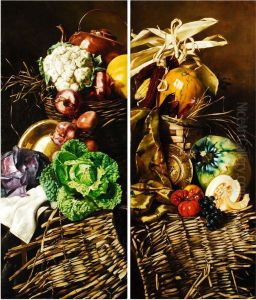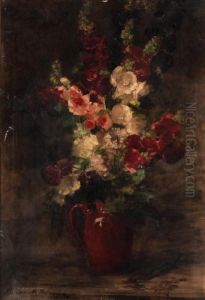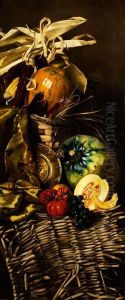Margarethe Hormuth-Kallmorgen Paintings
Margarethe Hormuth-Kallmorgen, born in 1857 and passing in 1916, was a German artist whose life and work were situated at the intersection of the 19th and 20th centuries, a period marked by significant cultural and artistic transformations in Europe. Her artistic journey provides a glimpse into the evolving landscape of European art, reflecting both the traditional influences of her early years and the emerging modernist tendencies that characterized the turn of the century.
Margarethe was born into an era when the opportunities for women in the arts were beginning to expand, albeit slowly. Despite the societal constraints that often limited women's participation in the professional art world, she pursued her passion for art with determination. Studying art during this time meant navigating a path that was not fully open to women, yet Margarethe managed to develop her skills, possibly studying in private studios or under the tutelage of established artists, as was common for women artists of her time.
Throughout her career, Margarethe Hormuth-Kallmorgen's work was influenced by the broader movements of her time, yet she maintained a unique voice that distinguished her contributions. She may have been associated with or influenced by the Impressionist movement, which was gaining prominence during her lifetime, with its emphasis on capturing light and its effects on the landscape and daily life. Her work possibly reflected the Impressionist interest in nature, as well as the movement's characteristic brushwork and vibrant palette.
Despite the challenges she faced as a woman in a predominantly male art world, Margarethe Hormuth-Kallmorgen left a legacy that contributed to the rich tapestry of European art history. Her life and work serve as a testament to the resilience and creativity of women artists who navigated the complexities of their times to express their artistic vision. Although detailed records of her exhibitions and receptions may be scarce, her contribution to the art world of her era remains an important part of the narrative of women's roles in the arts.
Margarethe Hormuth-Kallmorgen's death in 1916 marked the end of a life dedicated to art, one that spanned the tumultuous years of the late 19th and early 20th centuries. Her passing came at a time when the world was engulfed in the First World War, a conflict that would forever alter the cultural landscape of Europe. Her artistic legacy, like that of many women of her era, highlights the need for further research and recognition of the contributions of female artists to the history of European art.



